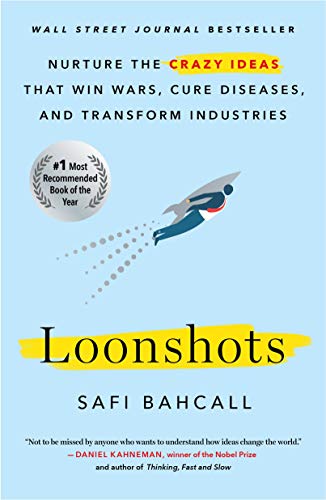Loonshots: How to Nurture the Crazy Ideas That Win Wars, Cure Diseases, and Transform Industries Link to heading
Summary Link to heading
“Loonshots,” written by Safi Bahcall, is a compelling exploration of how innovative ideas, often perceived as crazy or unrealistic, can lead to groundbreaking advancements and transformations across various industries. The book delves into the mechanisms that foster or hinder the development of these radical ideas, which Bahcall terms “loonshots.” By drawing on historical examples and scientific principles, the author illustrates the societal and organizational traits that impact the success of loonshots. Key concepts in the book include the distinction between “P-type” and “S-type” loonshots—product innovations versus strategy innovations—and how organizational structures and cultural dynamics can nurture these ideas.
Review Link to heading
“Loonshots” is celebrated for its insightful combination of storytelling and scientific analysis. Bahcall’s background in physics and entrepreneurship enriches his presentation of complex ideas, making them accessible and engaging. The book is particularly praised for its use of historical case studies, such as the development of radar technology during World War II and the rise of the pharmaceutical industry. Some critiques mention that the narrative occasionally overemphasizes certain examples at the expense of broader applications. Nevertheless, its unique perspective on innovation has made it a valuable resource for business leaders, policymakers, and anyone interested in the dynamics of technological advancement.
Key Takeaways Link to heading
- Embrace Loonshots: Encourage and invest in high-risk, high-reward projects that might initially seem impractical but have transformative potential.
- Balance Types: Understand the difference between P-type (product) and S-type (strategy) loonshots, and foster an environment that balances both.
- Phase Transitions: Apply the concept of phase transitions from physics to organizational culture to help manage the balance between innovation and structure.
- Separate Phases: Mix and balance “artists” and “soldiers” within organizations, allowing creativity and rigorous execution to coexist without stifling each other.
- Dynamic Equilibrium: Maintain a dynamic equilibrium in organizations by managing incentives, structures, and cultural norms to nurture creative ideas without dissolving discipline.
Recommendation Link to heading
“Loonshots” is highly recommended for business executives, innovators, and organizational leaders who aim to drive disruptive change within their industries. Additionally, those interested in the interplay between science and business will find Bahcall’s analysis both informative and inspiring. By illustrating how to foster environments conducive to innovative thinking, the book serves as a valuable guide for anyone looking to harness the power of “crazy ideas” to achieve remarkable success.
